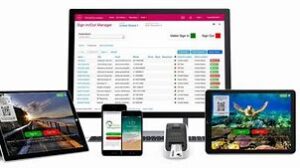Table of Contents
ToggleThis blog post and its associated images have been reproduced with the explicit permission of TkXel , MarkiTech’s technology partner.
Written by,
Umair Maqsood, Digital Marketing Manager, TkXel
If you are still thinking of improving your website to engage users, then you’re certainly going to miss on innumerable opportunities to increase conversions, because mobile usage around the globe is on an exponential increase.
Smartphone owners in the US account for about two-thirds of the population, and most of these rely on their smart devices alone to access the internet.Smartphone users
Pew Research Center found that about 64% of American adults now own a smartphone of some kind, up from 35% in the spring of 2011.
Mobile devices are disrupting our everyday life, from searching things on the internet, to purchasing products.
The growing use of smartphones for multitasking has improved our lives in unprecedented ways. This major shift from the traditional desktop has added convenience to the average user’s/consumer’s experience through improved visual features and better accessibility features.
Where mobile-optimized websites and business apps increase the user retention ratio through a better mobile user experience, poorly designed websites are capable of pushing away potential users, and force them to abandon your site for good.
According to BrightEdge:
a. Tablets and smartphones make up 35% of organic search traffic
b. Misconfigured websites lost 68% of smartphone traffic
An improved and better user experience is one of the major factors that drive you towards success. But unfortunately, many business have not yet adopted the best ways to deliver remarkable user experiences to mobile users.
Here are three ways you can deliver a phenomenal user experience.
1. User needs must be kept in mind when designing
A design that is capable of addressing your mobile user’s needs as much as possible should be your priority. Users interact with mobile devices in a very different manner than desktop systems.
Today, users expect instant results for their searches because of their goal-oriented approach to using smartphones.
Your design must facilitate the user needs and ensure that the desired content is delivered immediately. Furthermore, the design should not impact the quality of your content. It is important to have a responsive web design rather than separate pages for mobile for your websites. This enables your website to fit all the varying mobile and tablet screens. Users want to experience their favorite brands in a true and familiar manner when on the go, regardless of which device they use. Therefore, it is important to optimize your website to keep your users engaged, and prevent them from leaving for good.
You can learn more about user needs by enabling analytics to analyze the amount of traffic coming to your site, and also, to know which platform is being used the most to access your website. This way, you are better able to know if you want to build a mobile version of your site, or have an app, or both.
2. Make interaction simple and clear for visitors
Laptop/desktop computer users find it much easier to navigate across a site, primarily because of the size of the display, and the ‘clickable’ cursor that allows them to perform on-site actions easily. This isn’t the case for mobile users, who view the site differently, and since mobile devices are relatively slower than desktop computers, people fear tapping a wrong button which redirects them to an unwanted link.
When users are provided a simple and clear interface, it adds to the user experience automatically. Therefore, when designing your site, it must be ensured that all the elements are placed as distinctly as possible, with enough space in between to prevent users from clicking a wrong button. Your links, buttons, and any other interaction points should be visually clear, and large enough to be easily made out by the user, and should be clickable with a thumb. Visitors should have a clear idea of navigating around your website, they should be able to know what they will find on a page even before tapping a button. It helps to keep the menu bar in the same position on every page.
3. Plan, prioritize and then place your content
Mobile users are different from desktop users, and have different needs. Your site should have a uniform layout on all pages. The mobile user should feel comfortable with the text, images, navigation, and other elements placed on your website. Placing these elements in the same place on each page will ensure that your user spends less time getting to know your website and more time being engaged to the content. Consistency is important to user engagement, and experience.
Convincing your mobile visitors to perform certain actions is an altogether different process as well. Add CTAs to your main page. CTAs allow visitors to move easily down the funnel towards conversion. You have to make your CTAs visually compelling, and prominent. The CTA should be ideally placed upfront, for example, you can place a “Contact Us” or “Request a Quote” button on the main page, and should be easily recognizable.
Furthermore, your navigation menu should not consume much space. In fact, it should be hidden inside an icon, for example, the ‘hamburger’ icon. The menu should expand when an icon or button is clicked. This makes it easier for users to navigate across the site.
Having a striking banner on the main page is a very good idea as well. This banner can be used to highlight new Call to Actions in Mobiletrends, or present special offers to the users. Optimizing the banner is as important as the CTA and the navigation menu.
Summing it all up, it is important to understand your user, and it must be kept in mind that mobile users are driven by engaging information. So, highlight your main elements, use CTAs and banners, and keep everything simple. Too much of flair in your display can also put off customers. A neat and simple interface, blended with compelling information, is the key to driving more users towards your site, and keeping them engaged, while enhancing the overall mobile experience.
Optimizing your site, or app, in such a manner will not only enhance the mobile user experience, it will also imply that you understand your users and are dedicated to delivering what they want the most, hence bringing them closer to you and increasing loyalty and all of this can be taken care of during the development phase by your mobile app developers.
Download our extensive research on “Global / Canadian Mobile Phone Accessories Analysis & Recommendations” and learn how to utilize the rapidly flourishing mobile phone accessories segment of the market.
Do you want to upgrade your website to be mobile-friendly? We have the expertise to deliver a complete mobile experience to your customers.
[cta]





Recent Comments